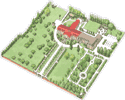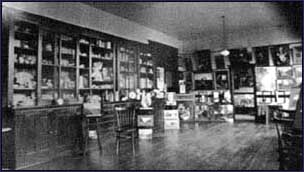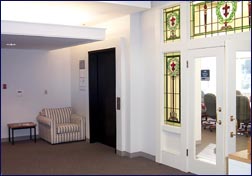
Hooper Wing: The 1910 Addition Art Studios
Moulds taken
from classical sculptures were used to help with drawing skills,
and these, along with objects for still life work in paint and charcoal,
would be arranged on tables at the front of the class. Exhibitions
of art work by the Sisters, students and community members taking
classes in the Art Department were held on a regular basis, turning
the rooms from studios into galleries.
In a fitting
re-use for the building, the 1910 wing of St. Ann's became Ministry
of Education offices, after the renovation was completed in the
1990s. Where the girls once studied, slept and created works of
art and music, now decisions are made about the future of education
for students in schools today. Contact
St. Anns Academy at stanns.academy@gems2.gov.bc.ca
Contact the Webmaster at zeroone@zeroonedesign.com
|


